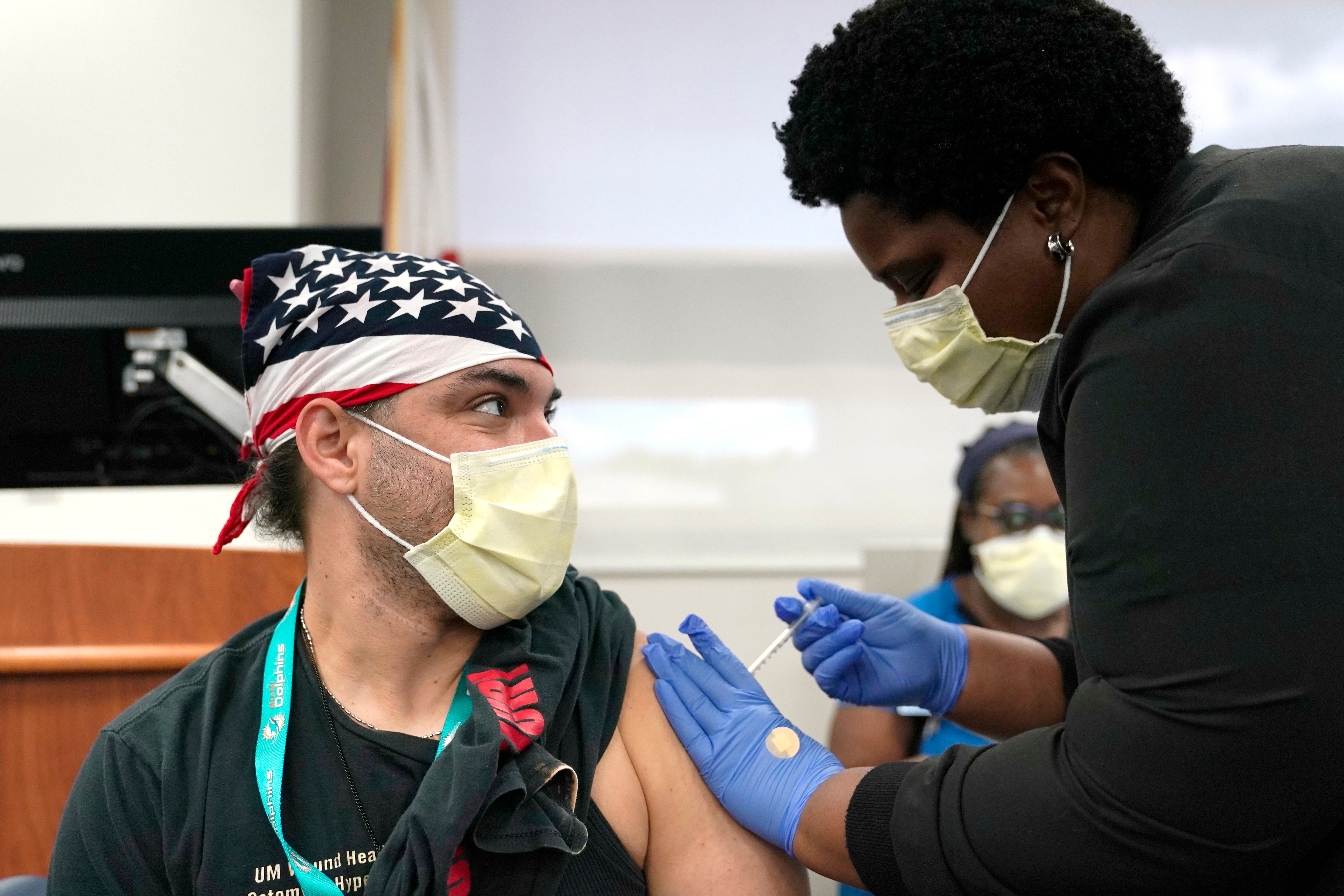With virus cases down, Florida cities resume usual water use
Two of Florida’s largest cities have ended water emergencies now that COVID-19 hospitalizations have declined in the state

Your support helps us to tell the story
From reproductive rights to climate change to Big Tech, The Independent is on the ground when the story is developing. Whether it's investigating the financials of Elon Musk's pro-Trump PAC or producing our latest documentary, 'The A Word', which shines a light on the American women fighting for reproductive rights, we know how important it is to parse out the facts from the messaging.
At such a critical moment in US history, we need reporters on the ground. Your donation allows us to keep sending journalists to speak to both sides of the story.
The Independent is trusted by Americans across the entire political spectrum. And unlike many other quality news outlets, we choose not to lock Americans out of our reporting and analysis with paywalls. We believe quality journalism should be available to everyone, paid for by those who can afford it.
Your support makes all the difference.Two of Florida s largest cities have ended water emergencies now that COVID-19 hospitalizations have declined drastically in the state.
Back in August, the city-owned Orlando Utilities Commission asked residents to stop watering their lawns or washing their cars because liquid oxygen that is used for treating the city's water was being diverted to hospitals for patients suffering from the virus. The utility made the decision as it faced the prospect of getting only half of its usual shipment of liquid oxygen used for water treatment.
Around the same time, the Tampa Water Department started using chlorine instead of its usual liquid oxygen method to disinfect its water of viruses and bacteria because liquid oxygen was being diverted to local hospitals.
Utility officials in Orlando said Tuesday that residents can resume their normal water use, including irrigating their lawns and washing their cars. In Tampa, water department officials also said they were going back to treating the 82 million gallons (310 million liters) of drinking water it produces each day with liquid oxygen.
“We were fortunate that we were able to quickly switchover to using chlorine as our primary way to disinfect the water. Not every water treatment plant affected by the shortage of liquid oxygen had that flexibility," said Chuck Weber, director of the Tampa Water Department. “The resumption of regular liquid oxygen deliveries, lets us return our normal operations.”
About 40% of the potable water in Orlando is used for irrigation, but Orlando users only cut back water consumption by 16%, hitting a low of 76 million gallons (288 million liters), indicating the restriction wasn't universally embraced. Nevertheless, Orlando Utilities Commission officials said they were able to get through the crunch and averted the need for a boil-water alert.
Since the 1990s, the utility has used liquid oxygen to remove the slight discoloration and rotten-egg smell that is found naturally in Florida’s water supply.
“With our community’s help in reducing the demand on our system, we were able to get through this difficult time together," said Clint Bullock, general manager and CEO of the utility.
Coronavirus-related hospitalizations in Florida have declined from a high of around 17,000 in August to just over 3,300 this week.